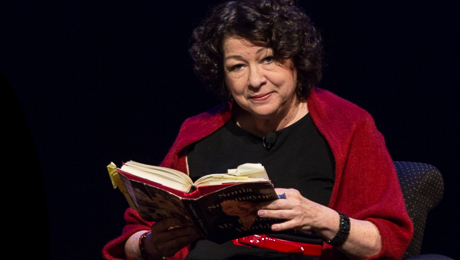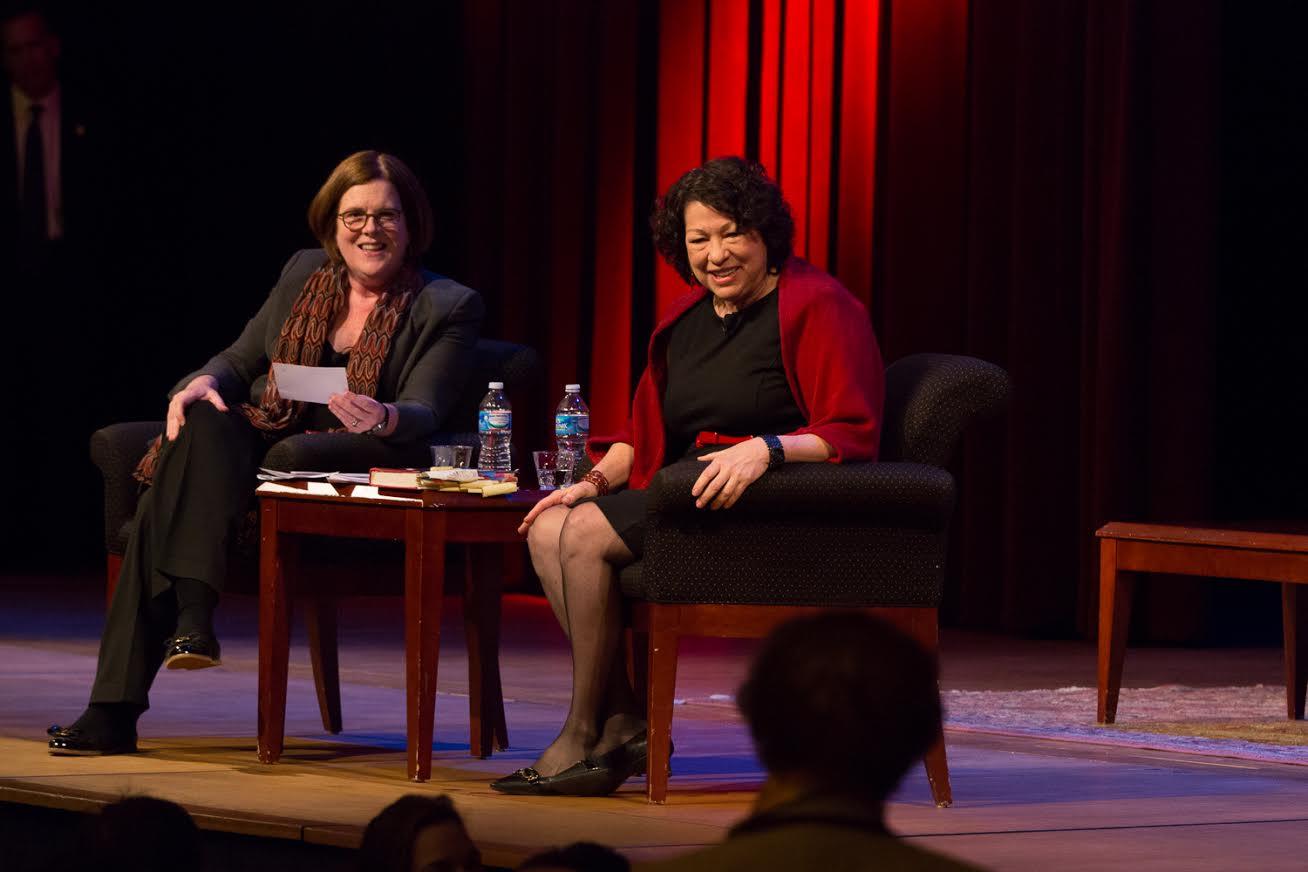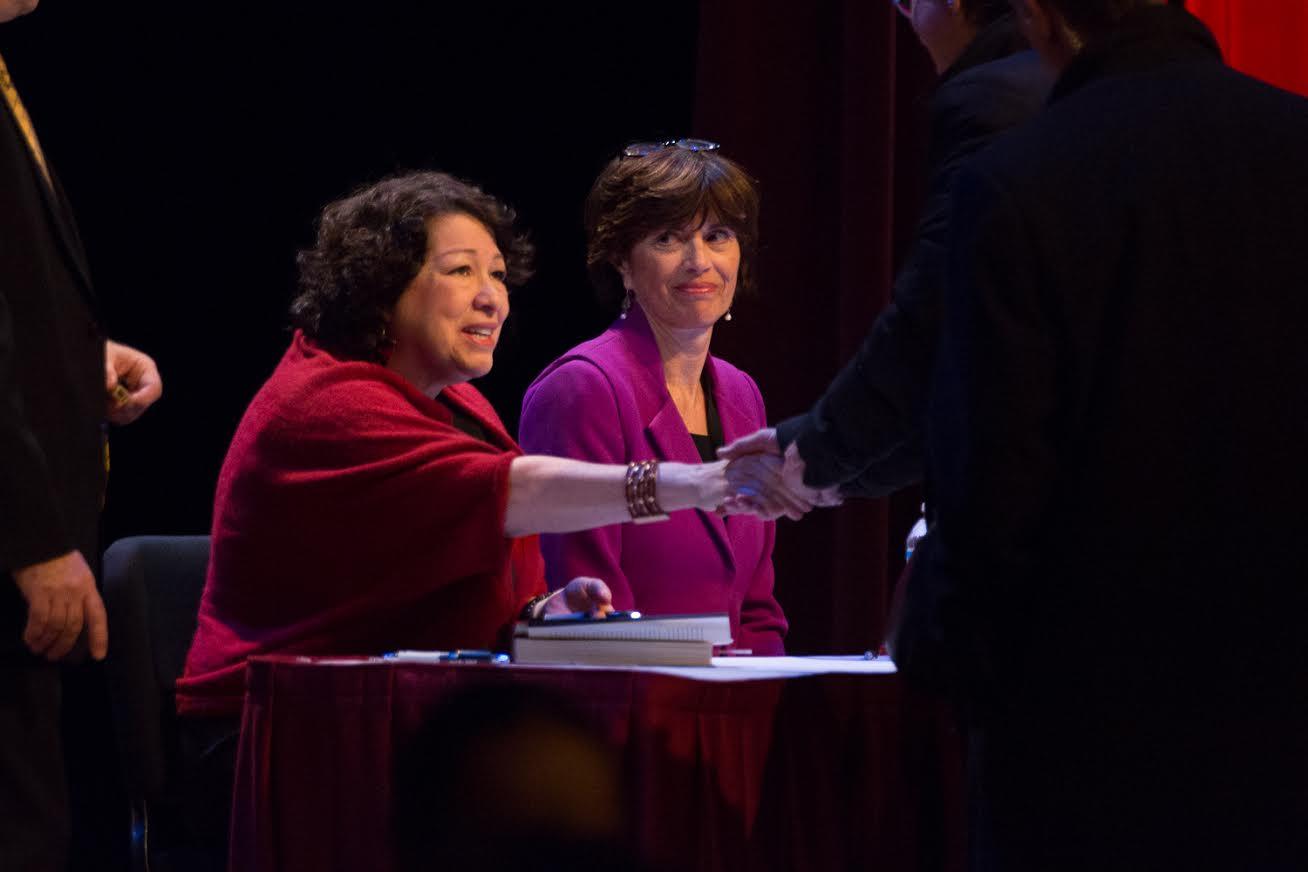By James Irwin
The events of Sonia Sotomayor’s journey to the Supreme Court have been widely chronicled, during her confirmation hearings, in the media, and in her memoir, “My Beloved World.”
She grew up in a South Bronx, N.Y., housing project. She was diagnosed with juvenile diabetes before her eighth birthday. Her father was an alcoholic, and died when she was 9. She applied herself in school, attended Princeton and then Yale, launching a 35-year (and counting) legal career.
Those are the facts of Justice Sotomayor’s story. But the justice is more of a “why” person. And she dove into the whys and hows of her life in front of a capacity crowd Wednesday night at Lisner Auditorium, where she spoke for 80 minutes at a discussion hosted by Smithsonian Associates and then signed copies of her autobiography.
“I was trying to figure out what the message would be,” Justice Sotomayor said of writing her book. “And there really isn’t, in any good writing I think, just one message; there are layers of messages. Among them was, first, entertainment. But the second is the story should have meaning, about me and the lessons I’ve learned.”
The discussion, much like “My Beloved World,” was filled with advice wrapped inside the narrative. The justice served up a volley of life lessons, introducing them in the form of events and people who helped her grow. She discussed learning how to administer her own insulin shots, the courage of stepping out of her comfort zone at Princeton, and how a love of art fueled her inquisitive mind. She told of how she dreaded public speaking, but wanted to go into law so badly that she started volunteering to read Bible verses at church to conquer her fear.
“She kept talking about taking small steps,” said Bonnie Leksrisawat, a first-year student in GW’s Physician Assistant Program. “I thought that was really good advice because if you look too far into the future, it gets a little overwhelming. I think what surprised me most was how down to earth she was.”
Justice Sotomayor’s frequent, well-placed anecdotes and conversational rapport charmed the audience, often sending the crowd of 1,500 into spontaneous laughter. One of her more memorable stories included her conversation with President Barack Obama during her interview for the Supreme Court position, when she thanked him for considering her for the bench.
“I was so honored, and I meant every word of it,” she said. “So what did he do? He dumped all this responsibility on me.”
Another endearing moment included Justice Sotomayor recalling a conversation she had with a roommate about the culture shock of going from the Bronx to Princeton.
“You were ‘Alice in Wonderland,’” her roommate said.
Justice Sotomayor paused.
“Who’s Alice?” she asked.
The audience laughed. Justice Sotomayor, growing up in a house where her parents and relatives spoke only Spanish, never read “Alice in Wonderland.” She then explained how she brought her experiences with her when she moved outside her comfort zone, using her history as a security blanket, not a cocoon.
When the topic turned to diversity on the bench, the justice offered up thought-provoking words, focusing on the diversity of ideas, rather than religion, ethnicity or sex.
“We are being asked to become experts in someone else’s problems,” Justice Sotomayor explained. “The way you can do that with greater facility is if you’ve had enough of your own life experiences to be able to comprehend the width and depth of issues that judges face.”
Variety, or lack thereof, on the bench is something that concerns her.
“Today, for example, most judges in the federal system have been prosecutors; hardly any have been defense attorneys [and] hardly any have done civil rights work,” she said. “You want that diversity on the bench, so that when issues are discussed among judges every argument is being made by someone who can articulate it in the best way.”
Many members of the audience nodded thoughtfully.
“I think she put into perspective that the way we sometimes view diversity isn’t the total picture of diversity,” Physician Assistant/Master of Public Health student Tammy Nguyen said. “If you stick to people and environments that are familiar, you limit yourself and you limit what you know. You want varying perspectives.”
That, Justice Sotomayor said, is the foundation of what she calls her “beloved world.”
“You educate yourself to make yourself a more interesting person,” she said. “You can’t be interesting unless you learn.”






